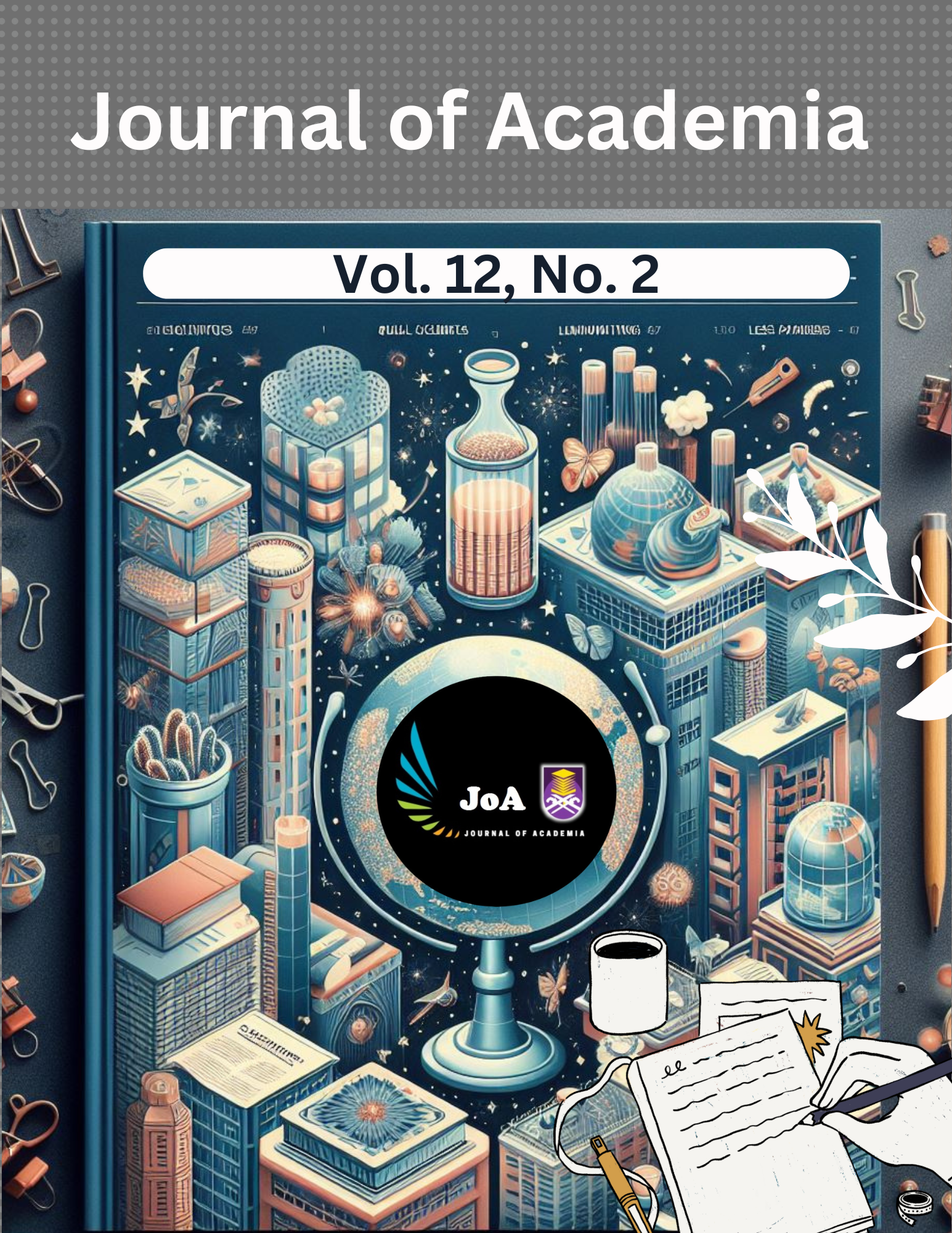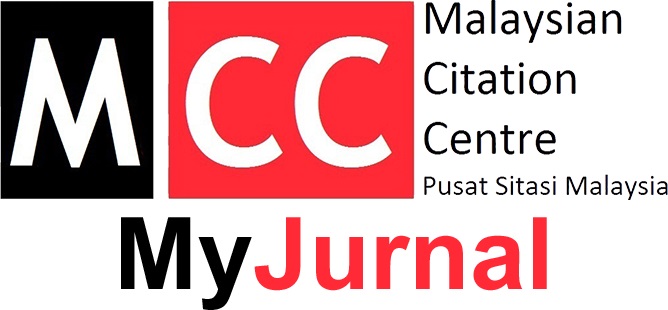DETERMINATION OF TANNIN CONTENT, PHENOLIC CONTENT AND ANTIOXIDANT ACTIVITY OF ROOIBOS TEA, GREEN TEA AND BLACK TEA FROM COMMERCIAL TEA BAG
Keywords:
Rooibos tea, green tea, black tea, tannin, antioxidant activityAbstract
Various teas like Rooibos, black, and green tea offer unique benefits through antioxidants that protect cells from free radicals. Tannin, an antioxidant in tea, has health advantages but may hinder iron absorption, reducing the nutritional value of tea. Thus, this study aims to determine the total tannin content (TTC), total phenolic content (TPC), and antioxidant activity of Rooibos tea, green tea, and black tea. This study also aims to determine the correlation between TPC and TTC with antioxidant activity. The total tannin content and total phenolic content were measured using the Folin-Ciocalteu method. The antioxidant activity was evaluated using the DPPH radical scavenging assay. Green tea exhibited the strongest antioxidant activity with an IC50 value of 15.01 μg/mL and possesses high phenolic content (56.57 mg GAE/g), and high tannin content (101.75 mg TAE/g). Black tea also showed strong antioxidant activity with an IC50 value of 18.93 μg/mL with a total phenolic content of 46.18 mg GAE/g and a total tannin content of 41.37 mg TAE/g. Similarly, Rooibos tea also showed strong antioxidant activity with an IC50 value of 25.11 μg/mL but Rooibos tea had a lower tannin content (38.75 mg TAE/g), and lower phenolic content (36.95 mg GAE/g) compared to green tea and black tea. Hence, the teas ranked by antioxidant strength are Rooibos < black < green tea. By using Pearson’s correlation coefficient, total phenolic content was found closely associated with antioxidant activity with r = 0.984. Total tannin content, on the other hand, was weakly associated with antioxidant activity with r = 0.178. Consequently, the study's findings suggest that a higher total phenolic content corresponds to stronger antioxidant activity, whereas elevated total tannin content does not necessarily indicate higher antioxidant activity. Therefore, according to all values, Rooibos tea is a better option than green and black tea.
References
References
Aktar, T. (2020). A comparative study of the total phenolic, total antioxidant, and ascorbic acid contents of the Cistus criticus, fermented rooibos, and green tea infusions. Dicle University Journal of Engineering (DUJE), 11(3), 1197–1204.
Aryal, S., Baniya, M. K., Danekhu, K., Kunwar, P., Gurung, R., & Koirala, N. (2019). Total phenolic content, flavonoid content and antioxidant potential of wild vegetables from western Nepal. Plants, 8(4), 96.
Astill, C., Birch, M. R., Dacombe, C., Humphrey, P. G., & Martin, P. T. (2001). Factors affecting the caffeine and polyphenol contents of black and green tea infusions. Journal of Agriculture and Food Chemistry, 49(11), 5340–5347.
Bhebhe, M., Chipurura, B., & Muchuweti, M. (2015). Determination and comparison of phenolic compound content and antioxidant activity of selected local Zimbabwean herbal teas with exotic Aspalathus linearis. South African Journal of Botany, 100, 213–218.
Chung, K.-T., Lu, Z., & Chou, M. W. (1998). Mechanism of inhibition of tannic acid and related compounds on the growth of intestinal bacteria. Food and Chemical Toxicology, 36(12), 1053–1060.
Delimont, N. M., Haub, M. D., & Lindshield, B. L. (2017). The impact of tannin consumption on iron bioavailability and status: a narrative review. Current Developments in Nutrition, 1(2), 1002001.
Dobrinas, S., Soceanu, A., Popescu, V., Carazeanu Popovici, I., & Jitariu, D. (2021). Relationship between total phenolic content, antioxidant capacity, Fe and Cu content from tea plant samples at different brewing times. Processes, 9(8), 1311.
Georgiev, K., Zhelev, I., & Georgieva, S. (2014). Total phenolic compounds and tannins content of bancha green tea (Camellia sinensis) depending on extraction conditions. Scripta Scientifica Pharmaceutica, 1, 48–51.
Indarti, K., Apriani, E. F., Wibowo, A. E., & Simanjuntak, P. (2019). Antioxidant activity of ethanolic extract and various fractions from green tea (Camellia sinensis) leaves. Pharmacognosy Journal, 11(4), 771–776.
Johari, M. A., & Khong, H. Y. (2019). Total phenolic content and antioxidant and antibacterial activities of Pereskia bleo. Advances in Pharmacological Sciences, 2019, 7428593.
Jyoti, V. V., Pratikhya, B., & Giridhar, G. (2021). Phenolic compounds in tea: phytochemical, biological, and therapeutic applications. In A. B. Farid (Ed.), Phenolic Compounds (pp. Ch. 20). Rijeka: IntechOpen.
Kavitha, V. U., & Kandasubramanian, B. (2020). Tannins for wastewater treatment. SN Applied Sciences, 2, 1081.
Khan, N., & Mukhtar, H. (2013). Tea and health: studies in humans. Current Pharmaceutical Design, 19(34), 6141–6147.
Kowalska, J., Marzec, A., Domian, E., Galus, S., Ciurzyńska, A., Brzezińska, R., & Kowalska, H. (2021). Influence of tea brewing parameters on the antioxidant potential of infusions and extracts depending on the degree of processing of the leaves of Camellia sinensis. Molecules, 26(16), 4773.
Kumar, S., & Ojha, S. (2014). Evaluation of antioxidant activity and total phenol in different varieties of Lantana camara leaves. BMC Research Notes, 7, 1-9.
Lahare, R. P., Yadav, H. S., Bisen, Y. K., & Dashahre, A. K. (2021). Estimation of total phenol, flavonoid, tannin and alkaloid content in different extracts of catharanthus roseus from durg district, Chhattisgarh, India. Scholars Bulletin, 7(1), 1–6.
Ligor, M., Kornyšova, O., Maruška, A., & Buszewski, B. (2008). Determination of flavonoids in tea and Rooibos extracts by TLC and HPLC. Journal of Planar Chromatography – Modern TLC, 21(5), 355–360.
Lobo, V., Patil, A., Phatak, A., & Chandra, N. (2010). Free radicals, antioxidants and functional foods: Impact on human health. Pharmacognosy Reviews, 4(8), 118.
Malongane, F., McGaw, L. J., Olaokun, O. O., & Mudau, F. N. (2022). Anti-inflammatory, anti-diabetic, anti-oxidant and cytotoxicity assays of South African herbal teas and bush tea blends. Foods, 11(15), 2233.
McAlpine, M. D., Gittings, W., MacNeil, A. J., & Ward, W. E. (2021). Black and green tea as well as specialty teas increase osteoblast mineralization with varying effectiveness. Journal of Medicinal Food, 24(8), 866–872.
Muflihah, Y. M., Gollavelli, G., & Ling, Y. C. (2021). Correlation study of antioxidant activity with phenolic and flavonoid compounds in 12 Indonesian indigenous herbs. Antioxidants, 10(10), 1530.
Ng, S.-Y., Zulkifli, Z. I., Fadzelly, M., Bakar, A., & Suleiman, M. (2020). Effect of different solvent extractions on total phenols, tannins, and flavonoids content of indigenous medicinal plant Blumea Arnakidophora Mattf. from Sabah. Journal of Tropical Biology and Conservation, 17, 181–186.
Ngamkhae, N., Monthakantirat, O., Chulikhit, Y., Boonyarat, C., Maneenet, J., Khamphukdee, C., Kwankhao, P., Pitiporn, S., & Daodee, S. (2022). Optimization of extraction method for Kleeb Bua Daeng formula and comparison between ultrasound-assisted and microwave-assisted extraction. Journal of Applied Research on Medicinal and Aromatic Plants, 28, 100369.
Nkubana, A., & He, Q. (2008). A comparative study of antioxidant activity between black tea from Rwandan highlands with green and oolong teas from China. International Journal of Food Safety, Nutrition and Public Health, 1(2), 159–166.
Nuryana, I., Ratnakomala, S., Fahrurrozi, F., Juanssilfero, A. B., Andriani, A., Putra, F. J. N., Rezamela, E., Wulansari, R., Atmaja, M. I. P., & Lisdiyanti, P. (2021). Catechin contents, antioxidant and antibacterial activities of different types of Indonesian tea (Camellia sinensis). Annales Bogorienses, 24(2), 106–113.
Onaolapo, A. Y., & Onaolapo, O. J. (2019). Herbal beverages and brain function in health and disease. In Emerging Trends and Developments in Beverage Science. Academic Press: pp. 313–349.
Oancea, S., & Neamtiu, D. (2018). Evaluation of the content of polyphenolic-based antioxidant compounds of different flavored and non-flavored Rooibos (Aspalathus linearis) infusions. Applied Science Reports, 22(3), 99-104.
Patel, S. B., Attar, U. A., Patel, S. B., Attar, U. A., & Ghane, S. G. (2018). Antioxidant potential of wild Lagenaria siceraria (Molina) Standl. Thai Journal of Pharmaceutical Sciences, 42(2), 90–96.
Rahman, M., Jahan, I. A., Ahmed, S., Ahmed, K. S., Roy, M., Zzaman, W., & Ahmad, I. (2021). Bioactive compounds and antioxidant activity of black and green tea available in Bangladesh. Food Research, 5(3), 107–111.
Ratner, B. (2009). The correlation coefficient: Its values range between+ 1/− 1, or do they?. Journal of Targeting, Measurement and Analysis for Marketing, 17(2), 139-142.
Sarkar, A., Alam, M., Roy, P., Biswas, R., & Haque, M. I. (2022). Physicochemical, antioxidant and antimicrobial activities of green teas manufactured from common tea clones of different gardens in Bangladesh. Journal of Agriculture and Food Research, 100407.
Siddiqui, N., Rauf, A., Latif, A., & Mahmood, Z. (2017). Spectrophotometric determination of the total phenolic content, spectral and fluorescence study of the herbal Unani drug Gul-e-Zoofa (Nepeta bracteata Benth). Journal of Taibah University Medical Sciences, 12(4), 360–363.
Sieniawska, E. (2015). Activities of tannins – from in vitro studies to clinical trials. Natural Product Communications, 10(11), 1877-84.
Downloads
Published
Issue
Section
License
Copyright (c) 2024 Journal of Academia

This work is licensed under a Creative Commons Attribution-NonCommercial-NoDerivatives 4.0 International License.












